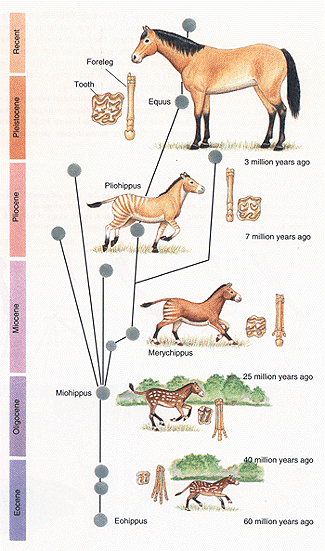
 |
Species may arise by gradual transformation, or by separation from the ancestral lineage.
Speciation may take the form of slow, gradual accumulation of phenotypic differences over time (gradualism), or abrupt changes in the phenotype that will remain relatively constant over long periods of time (punctuated equilibrium). The latter was suggested by Niels Eldredge (Museum of Natural History, New York) and Stephen J. Gould (Harvard University) to explain the frequently observed pattern in the fossil record.
Using molecular data and phylogenetic methods, scientists were eventually able to answer the question whether the giant panda is a bear or not. The lesser panda, however, is a closer relative of the racoon.
On phylogenetic trees, species that are connected with the smallest number of nodes (locations of branches on the tree) are the most closely related.
Based on pairwise comparisons between different taxa, different proteins, such as cytochrome-c (an electron transport molecule in cells) evolve at a constant rate. This rate then can be used to determine the degree of relatedness, or time of divergence of different taxa.
Evolution of Flight
Gradual Evolution and Punctuated Equilibrium
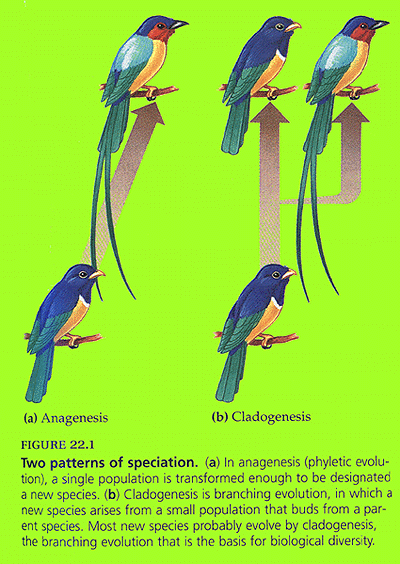
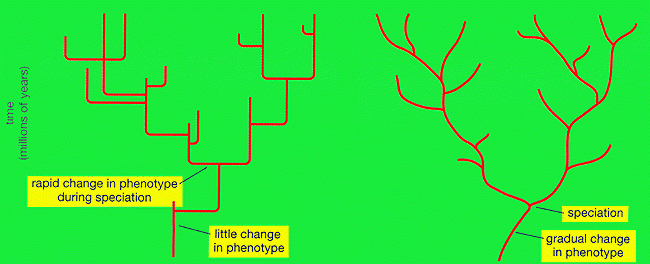
Phylogenetic Reconstructions
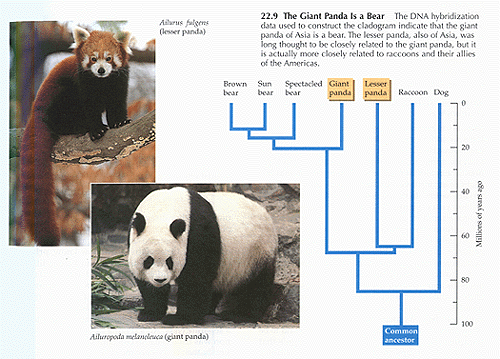
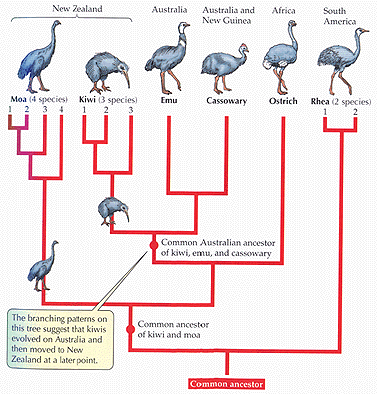
Molecular Evolution
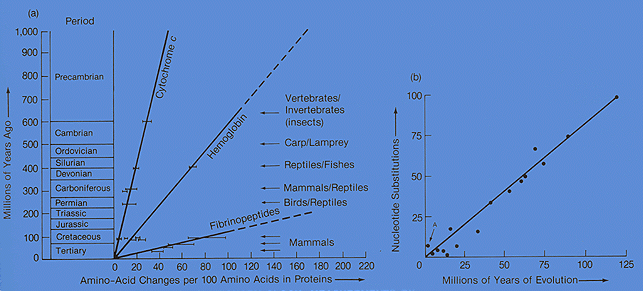
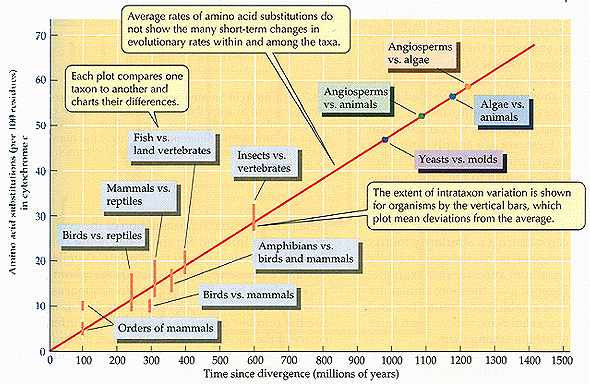
Long-term Trends in Biodiversity